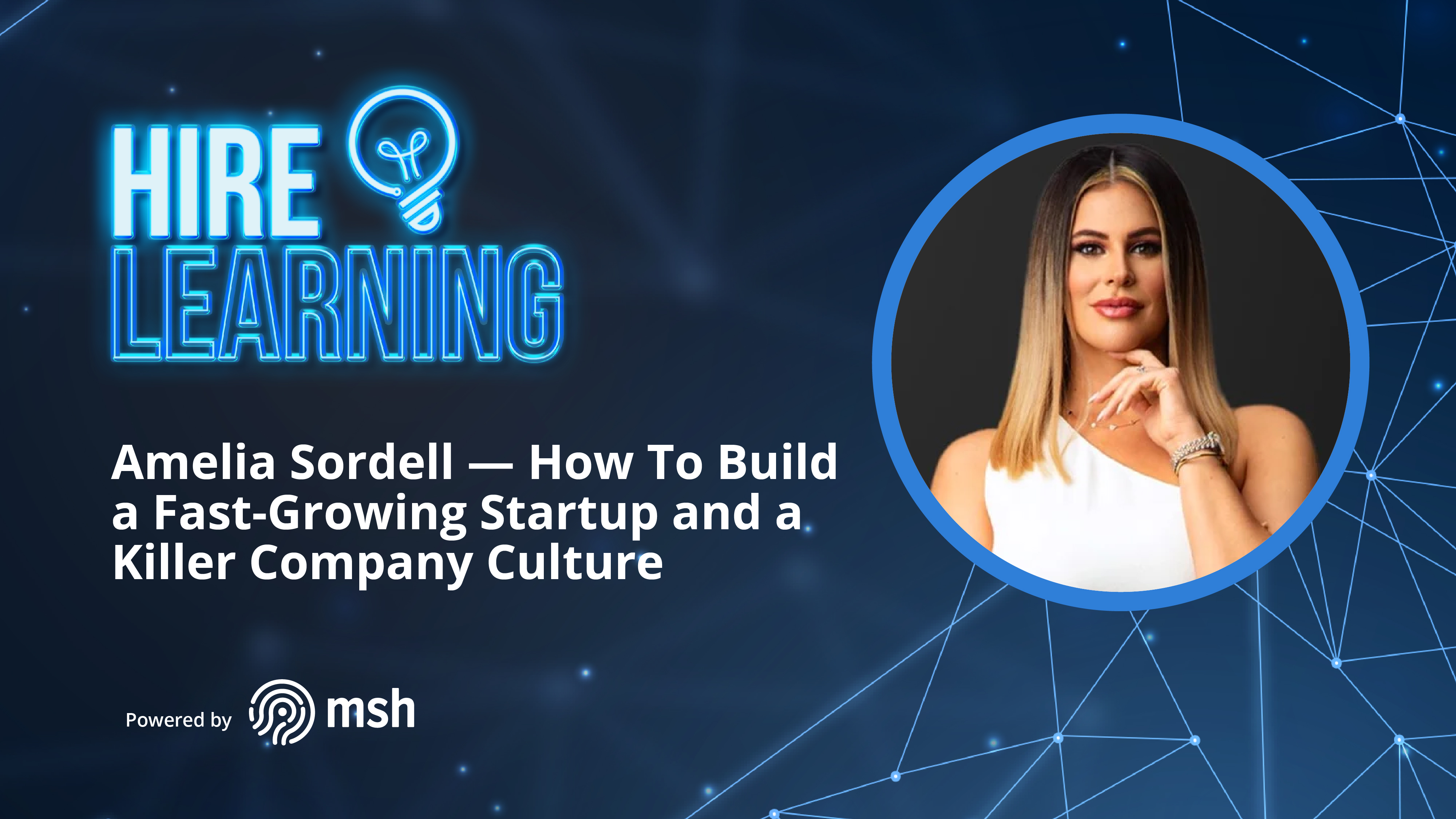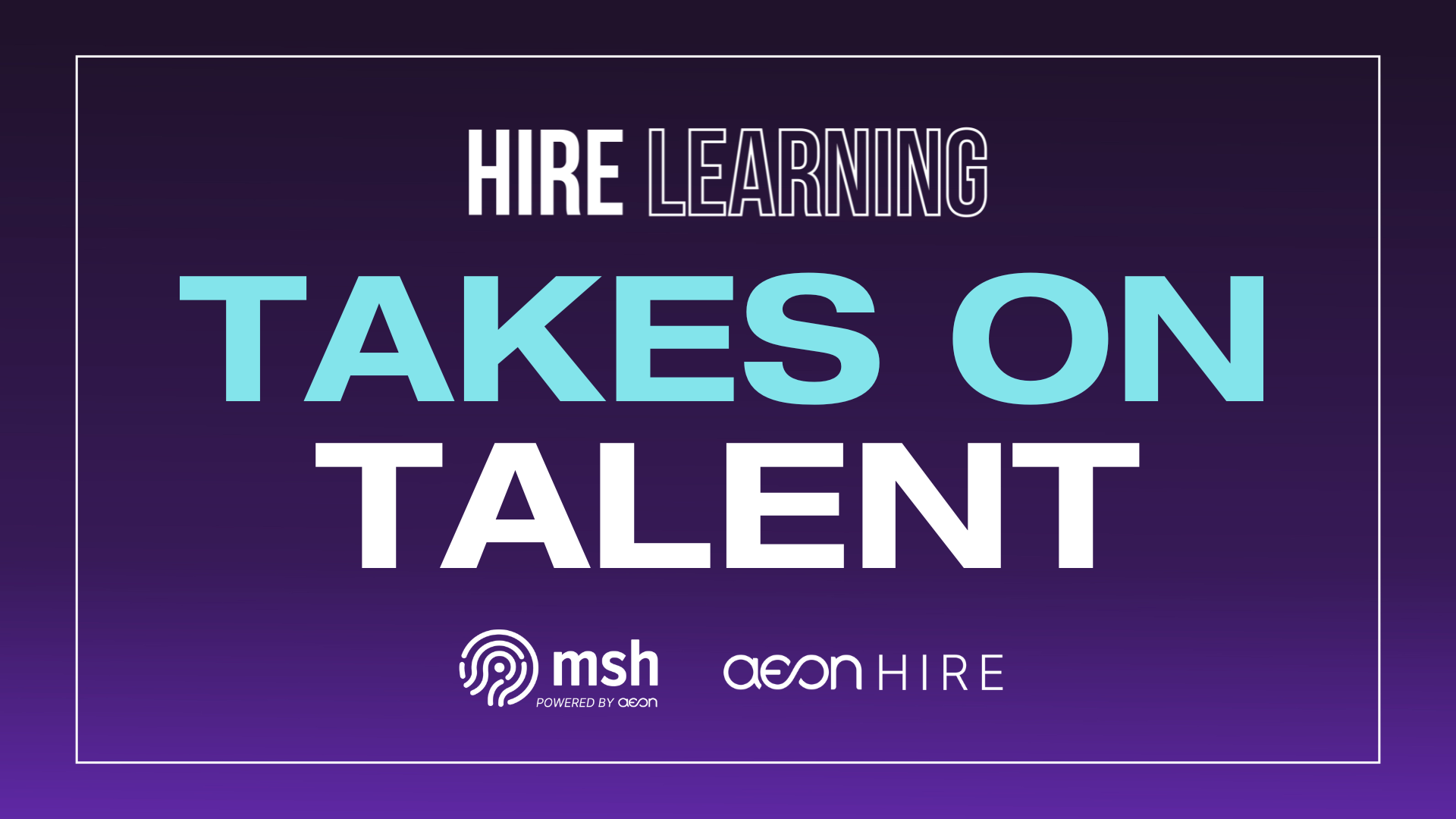AI should not replace your talent acquisition team. It doesn't matter how much money you want to save.
That’s the first thing I tell people. Not theory. Not hype. Just what actually works. I’ve been in the room for the great hires, and I’ve seen what happens when someone bets on the wrong one.
The problem is most teams still think AI is supposed to do the work for them. But AI doesn’t replace human judgment. It doesn’t replace structured interviewing. And it definitely doesn’t replace people who actually know what to look for.
What it can do, when it’s built the right way, is act like a co-pilot. It helps you stay consistent. It catches what you miss. It gives you structure and context so you can make better, faster decisions without flying blind.
That’s how we use it. This is what it looks like when you build AI the right way, train people first, and keep humans at the center of hiring.
AI is a Partner, Not a Replacement
If you're looking at AI to replace talent acquisition, you're going to fail. Your business is going to go to shit.
Let me be clear. AI isn’t a shortcut. It’s not a silver bullet. And if you’re betting on it to eliminate your recruiting function, what you’re really doing is rolling the dice with your company's future.
Here’s what actually works: using AI as a co-driver. Not the one with their hands on the wheel, but the one sitting next to you calling out what’s coming. You want AI to help you see better, move faster, catch things you might miss, but not take over.
In the real world, this looks like narrowing 2,000 applicants down to the top 10, using a well-built model that understands the nuances of the job, the culture, and the actual traits of high performers. That’s powerful. That’s the assist your team needs. But it only works if the foundation is built right.
We’ve tested this. We’ve trained our models based on thousands of placements. And the reason they’re effective isn’t just because of data. It’s because they were built by talent professionals. Not by some product team that’s never sat across from a candidate or had to explain a miss to a hiring manager.
Most of the AI hype in talent today is coming from people trying to solve a tech problem. We’re solving a talent problem.
Teach the Model What a Great Hire Really Looks Like
Most AI tools aren’t built to understand what makes someone great. They’re built to match resumes to job descriptions. And that’s exactly why they fail.
We’ve made thousands of placements, and we didn’t just dump that data into a model and hope it worked. We trained it. Carefully. Thoughtfully. Based on patterns that actually lead to successful hires, not just keywords.
Let’s say you’re hiring for a flat, fast-moving company. You want people who act like owners. That’s a behavioral trait. So we trained our model to look for that, not just someone who says they’ve “used Excel 10 times,” but someone who actually owned an outcome. Someone who uses language like “I led,” “I delivered,” “I was accountable.” That’s a signal. That’s what matters.
It’s not just about resumes either. We take industry alignment and adjacencies into account. Shifting from CPG to healthcare, for example, can be tough because of the regulatory differences. So our model flags those friction points. It knows which industries translate and which don’t.
You know what we don’t care about? Titles. A lot of organizations get hung up on that. “They weren’t a VP, so they must not be ready.” That’s lazy thinking. I’d rather take someone who’s actually done the work, who’s fluent in the skill, than someone who’s carried a fancy title for five years and can’t run a macro.
That’s how you avoid false positives. That’s how you build a model that doesn’t just search, but understands.
Build Interview Discipline Across Every Hiring Manager
Interviewing is a skill. Most people aren’t good at it.
That’s one of the biggest risks to quality of hire. You can run a solid process, screen great candidates, and still end up with the wrong hire because your hiring manager winged the interview or asked the wrong questions.
This is where AI can be a game changer. Not to replace the manager, but to act like a co-driver. Like bumpers on a bowling lane. It keeps people on track.
Let’s say you’re in the middle of an interview and you forgot to ask about compensation. You’re two minutes from wrapping. The AI agent can flag that in real time. It prompts you. "You haven’t discussed comp yet." That one nudge can save you from misalignment, wasted time, or a botched candidate experience.
It can also reinforce structure. We use behavior-anchored questions. We train our interviewers. And then we let AI do what it’s good at: making sure the process is followed, consistently, across every conversation.
That structure also helps neutralize mood swings. Maybe you just got out of a bad meeting or lost a deal. You’re not in the headspace to interview someone fairly. AI doesn’t care. It gives you the same checklist. Same prompts. Same expectations. That’s how you protect the process.
Because at the end of the day, a good hire isn’t just about how someone performed in one interview. It’s about comparing people consistently. AI helps you do that without relying on memory or gut feel. And that’s a big deal.
Decision Support, Not Decision Replacement
AI should give you the data to make a decision, not make it for you.
This is where most teams get it twisted. They want automation to tell them who to hire. But that’s not the job. The job is to surface insights. To give you the right context, the right signals, and then get out of the way so the hiring manager can do what only a human can do.
Let’s say you’re down to two candidates. One scored a 9.0. The other got an 8.8. AI can show you the breakdown. Here’s what they did well. Here’s what flagged as a weakness. Here’s feedback from seven different interviews. But you still need to decide. That 0.2 difference? It doesn’t make the call for you. It gives you the confidence to ask the right questions before you do.
We see this all the time. Without structure, hiring decisions get made based on how the last meeting went or what kind of mood someone’s in. That’s how great candidates get passed over.
With the right AI in place, the process gets tighter. Everyone’s scored against the same framework. Feedback is centralized. You’re not chasing down Slack messages or remembering what someone said in the hallway. It’s all there.
And most importantly, it’s still your decision.
Apply Consistent Criteria to Improve Fairness and Fit
You can’t just plug ChatGPT into one interview and think it’s fair. You have to use the same criteria across everyone.
That’s how you reduce bias. Not with slogans or hope, but with structure. Every candidate should be evaluated on the same behavioral framework. Same questions. Same scoring. Same definitions of what “good” actually looks like.
We’ve seen it happen without that structure. Someone gets picked because they played guitar, or because they went to the same school. That’s not hiring. That’s favoritism wrapped in gut feel.
Our process compares apples to apples. AI scores every interview using the same prompts and the same expectations. You’re not relying on someone’s memory or mood. You’re looking at the actual signals that matter.
That’s how you create consistency. That’s how you create fairness. And honestly, that’s how you create trust.
Most Hiring AI Fails Because It's Built Without Hiring Expertise
Most AI tools are trained by people who don’t know how to hire. That’s dangerous.
You get models that overvalue titles and tenure. You get keyword matching that thinks “10 years of Excel” means someone can actually use Excel. It doesn’t. You could have 13 years of Excel and still suck at Excel.
And then there’s the interview side. People ask GPT to come up with questions, and what do they get? Superficial garbage. Stuff that doesn’t get to behavior, outcomes, or real skill. Because the prompt was weak, or because the person behind it didn’t know what to ask in the first place.
That’s why we built all our prompts, scoring systems, and filters in-house. They’re based on real outcomes from real placements. Designed by people who’ve sat across from candidates, explained bad hires to CEOs, and actually know what “good” looks like.
Fully automating interviews creates another problem. Candidates hate it. There’s no trust. No feedback loop. You get ghosted Glassdoor reviews from people who felt like they were talking to a robot. Because they were.
AI should support the process. Not erase the human parts that matter most.
Start Small, Train People, and Scale With Intention
Train your people. Test the tool. Start small. Then scale.
That’s the order. Always.
When companies rush to deploy AI across the board, it backfires. The tech might work, but the people don’t trust it. Or worse, they don’t know how to use it. Then the whole thing gets scrapped, and everyone blames the tool.
The right way? Start with one function. One role type. Maybe it’s store managers. Maybe it’s ops leaders. Doesn’t matter. What matters is that it’s focused.
Train your hiring managers. Show them how structured interviews work. Teach them how the AI fits in. Let them see how it actually supports them, not replaces them.
Then you monitor. How’s the candidate experience? What feedback are you getting from hiring managers? Are the decisions better? Faster? Do you trust the outcomes?
And you audit. Look for false positives. Check DEI alignment. Ask whether the tool is helping people feel more confident, or just more confused.
Once you’ve done all that, then you scale.
A Better Process for Candidates and Hiring Managers
Where AI really shines? Quality of hire, candidate experience, and hiring manager experience. That’s what we focus on.
Hiring managers don’t want to build scorecards. They don’t want to write prompts or worry about which questions to ask. They just want to make a good decision, quickly and confidently. AI can help with that. It gives them structure, nudges, reminders, and all the documentation they need to stay consistent.
For candidates, it means speed. It means transparency. It means fairness. They’re not wondering if the process is going to change halfway through or if the next manager is going to ask something completely different.
It also helps with the moments that usually fall through the cracks. Scheduling. Progress updates. Feedback loops. All those little things that shape how a candidate feels about your brand.
In industries like QSR and CPG, those moments matter. A bad interview process doesn’t just hurt hiring. It hurts loyalty. It damages perception. It spreads.
AI can clean that up. It makes the process better for everyone.
Create a Talent Advantage Through Human-Led AI
Real hiring success starts with people who know how to spot it and tools that help them do it better.
Whether you are scaling with Enterprise RPO, flexing fast with On-Demand Staff Augmentation, or making your next Executive Search count, the goal is the same: structure, speed, and decisions you can stand behind.
That is what happens when AI is trained by experts and paired with humans who know how to hire.
.jpeg)

.jpeg)
